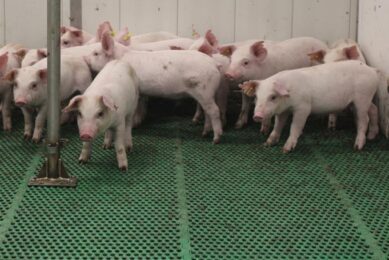Pig brain mist caused slaughter worker illness
The mysterious illness in 24 slaughterhouse workers in Minnesota and Indiana from 2006 to 2008 was caused by an autoimmune response to a mist of pig brain tissue. Doctors at the Mayo Clinic and government public health experts have confirmed this.
Their article was published recently in the British medical journal Lancet Neurology. The lead author, Mayo Clinic neurologist Dr. Daniel Lachance, said it was the first comprehensive account of the outbreak.
“This was really a unique experiment of nature where an unusual form of harvesting a part of an animal was utilized and inadvertently exposed individuals through their respiratory tract or their eyes or mouth and ended up triggering an autoimmune response in their own bodies,” he said.
Symptoms
The immune response affected the nervous systems of 21 workers in Minnesota and three in Indiana from November 2006 to May 2008. It caused painful symptoms that included weakness and fatigue to confusion and seizures.
©
All are improving and most no longer have measurable symptoms, Dr. Lachance said. Two of them may have permanent damage though.
©
Blasting pig brains
All the patients worked in or near areas where compressed air was used to extract pig brains. It was a rarely used process then, he said, and he is not aware of any slaughterhouse that still uses it. Pig brains are considered a delicacy in some Asian countries.
©
The Minnesota patients told Lachance that the symptoms started to appear within weeks of a speed up on the production line in 2006. “The line speed, the line speed, that’s what we heard over and over again,” he said.
©
At slower speeds, he told, workers were able to use compressed air to blast the brains down out of the head and into a bucket under the table.
©
“But it sounds as if as the line speed increased, the operator was not able to handle the process properly and as a consequence this material was being directed in all directions,” Lachance pronounced. “That’s our best estimate of what was really going on.”
©
Blood drawn by the Health Department from more than 85 other employees of the Minnesota slaughterhouse showed that 29 of them had antibodies indicating they were exposed to the brain mist. However, they didn’t get sick. It’s not clear why, Lachance said.
©
“There are actually many, many examples of this in medicine,” he commented. “There are people who have antibodies to HIV, yet don’t have AIDS. There are many instances where the antibodies are the markers for a disease, but aren’t a main factor in the appearance of the disease.”
©
The researchers also found a strong relation between how sick workers got and how closely they worked to the head table, he said.
©
Mechanism
The paper doesn’t report on the exact biological mechanism of the disease and Lachance said it might never been known. The slaughterhouses stopped removing brains with compressed air in late 2007, and the Mayo Clinic hasn’t seen a new case to study in more than a year.
©
“Essentially, this is something that has come and passed,” he said.
©
The cluster of the unusual neurological disease was first identified by the Mayo Clinic among workers at the Quality Pork Processors plant in nearby Austin in September 2007. The clinic reviewed its records and discovered it saw its first patient with the symptoms in November 2006. The last patient was in May 2008.
©
Dr. Aaron DeVries, the Minnesota Health Department epidemiologist, said that his department hopes to have its own article published soon. It will focus more on what changed in the slaughterhouses in 2006 to prompt the outbreak and on the work done nationally by public health authorities to identify other victims.











